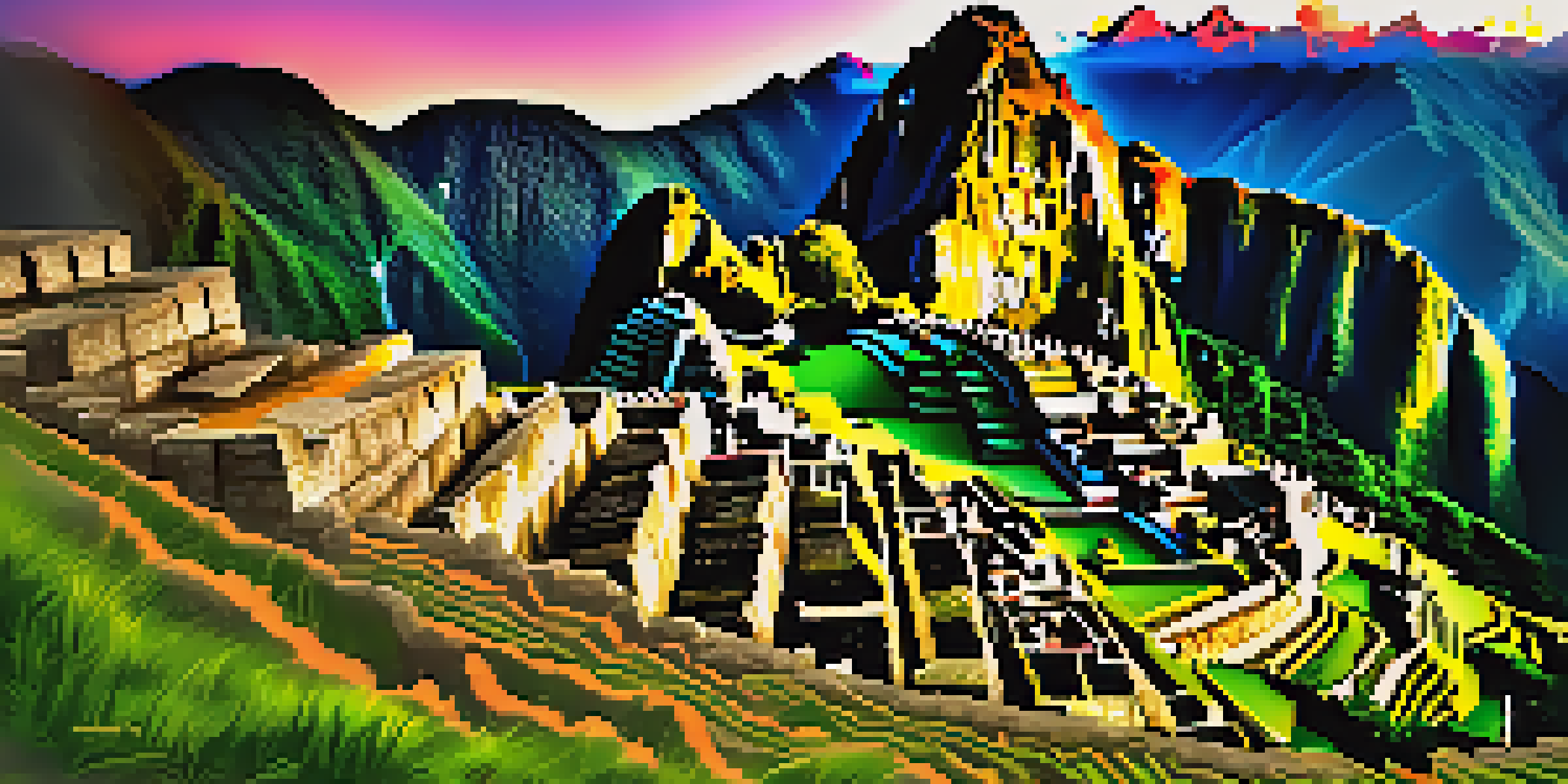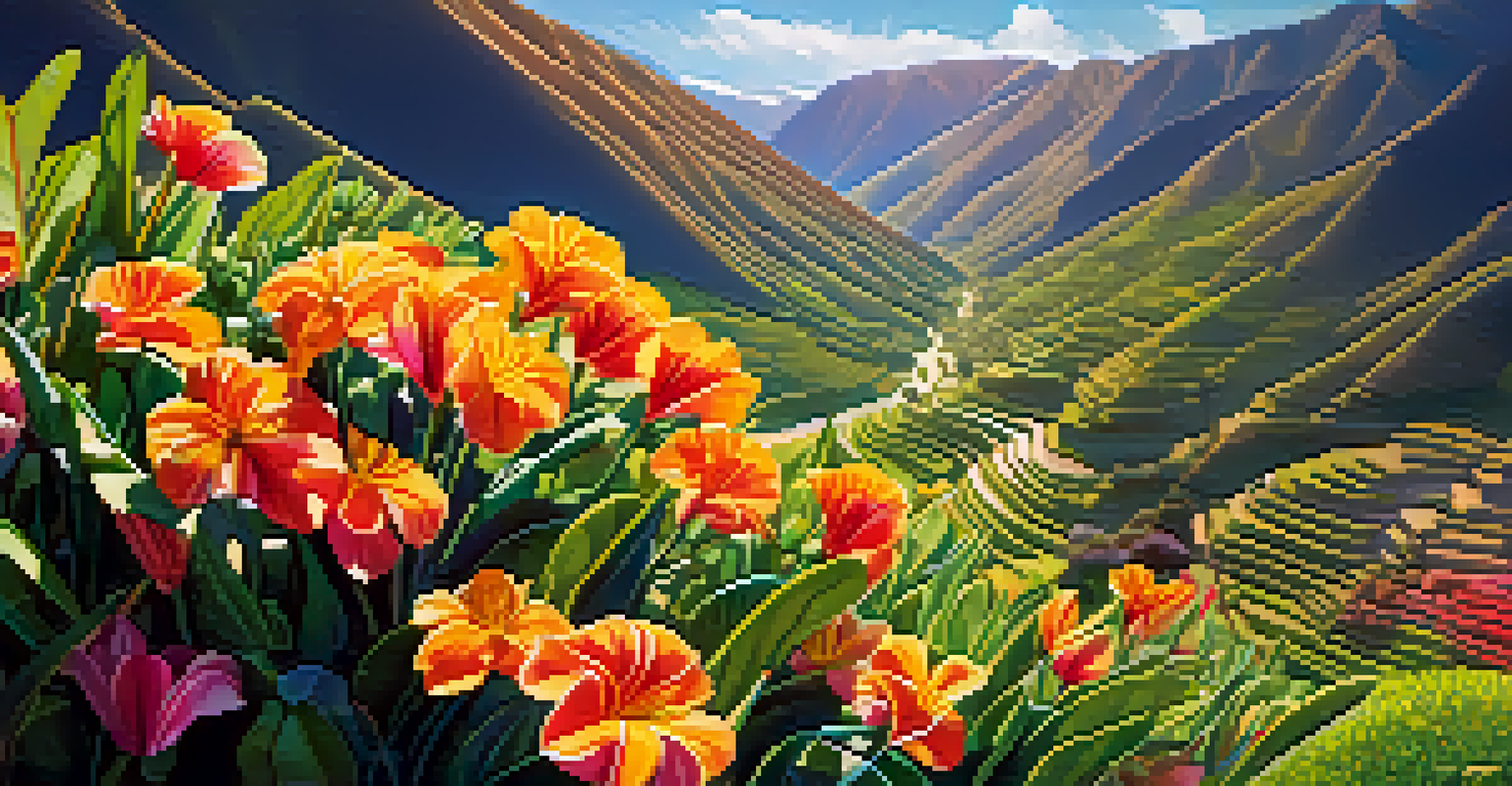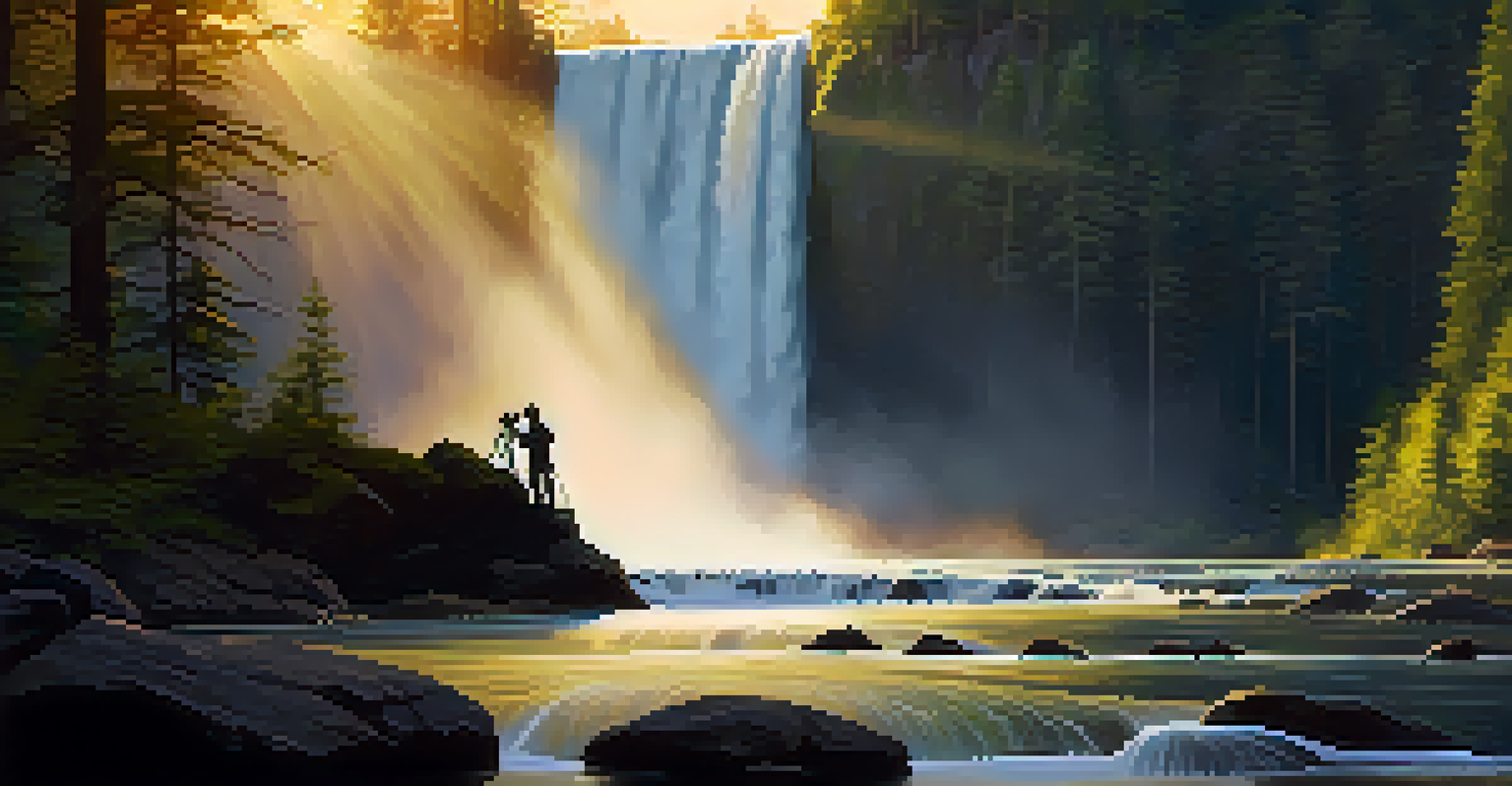Best Camera Gear for Adventure Photography in Peru

Choosing the Right Camera for Adventure Photography
When it comes to adventure photography in Peru, selecting the right camera is crucial. A DSLR or mirrorless camera offers versatility and high-quality images, essential for capturing the breathtaking landscapes and vibrant cultures. For those who prefer something lighter, a high-end compact camera can also deliver impressive results without the bulk.
Photography is the story I fail to put into words.
Consider the camera's weather resistance, especially if you're exploring the Amazon rainforest or trekking the Inca Trail. These environments can be unpredictable, and having gear that can withstand moisture and dust will save you from potential mishaps. Additionally, look for features like fast autofocus and high ISO performance to capture dynamic scenes in varying light conditions.
Ultimately, your camera should match your skill level and photography goals. Whether you're a beginner or a seasoned pro, the right choice will empower you to tell the story of your Peruvian adventures through stunning imagery.
Essential Lenses for Diverse Photography Opportunities
Lenses are just as important as the camera body itself when it comes to adventure photography. A versatile zoom lens, such as a 24-70mm, can handle a variety of scenes, from sweeping landscapes to close-up shots of local wildlife. This flexibility is particularly useful in locations like Machu Picchu, where you'll want to capture both the grandeur of the ruins and the intricate details of your surroundings.

For those seeking to delve deeper into nature photography, a macro lens can be a game changer. It allows you to focus on the smallest details, like the unique flora and fauna found in the Sacred Valley or the Amazon. Remember, the right lens can help you express your creative vision and showcase the diversity of Peru's breathtaking scenery.
Choosing the Right Camera
A DSLR or mirrorless camera is ideal for capturing Peru's stunning landscapes and cultures, while compact cameras offer portability without sacrificing quality.
Finally, don't overlook the importance of a sturdy tripod. It’s essential for long-exposure shots, especially during the golden hour when the light is just right. A good tripod will stabilize your camera, ensuring your images are sharp and free from motion blur, even in challenging conditions.
Protective Gear for Adventure and Safety
Adventure photography often means venturing into rugged terrains, so having protective gear for your camera is vital. A durable camera bag with weatherproof features can safeguard your equipment from rain, dust, and accidental drops. Investing in a quality bag not only protects your gear but also provides easy access during your adventures.
The best camera is the one you have with you.
Additionally, consider using lens filters. A polarizing filter can enhance colors and reduce glare, especially when photographing water or lush landscapes. Meanwhile, a UV filter acts as a protective layer for your lens, keeping it safe from scratches and dirt while maintaining image quality.
Finally, don't forget about backup storage options. SD cards can fill up quickly when capturing high-resolution images, so carrying extra cards and a portable hard drive will ensure you won’t lose any precious memories. Being prepared will allow you to focus on capturing the moment, rather than worrying about your gear.
Tripods: Stability for Perfect Shots
A tripod is an invaluable tool for adventure photographers looking to achieve stability in their shots. It’s especially important when shooting in low light conditions, such as during sunrise or sunset in the Andes. A sturdy tripod can help you capture long exposures, resulting in stunning imagery of flowing waterfalls or starry skies.
When selecting a tripod, consider its weight and portability. As you'll likely be hiking through diverse terrains, a lightweight, compact tripod that can easily fit into your backpack is ideal. Look for options that can withstand the elements while still being easy to carry.
Essential Accessories for Success
Investing in protective gear, sturdy tripods, and cleaning kits ensures your photography equipment remains safe and functional during adventures.
Additionally, a tripod with adjustable height and angles provides versatility, allowing you to experiment with different compositions. Whether you're shooting a sweeping landscape or a close-up of a local market, a good tripod will enhance your photography experience and the quality of your images.
Lighting Equipment for Captivating Images
Lighting can make or break a photograph, so understanding how to manage it is key for adventure photography in Peru. Natural light is often the most flattering, but carrying a portable reflector can help bounce light onto your subject, especially in shaded areas. This simple tool can dramatically improve your portraits of local people or wildlife.
In addition to reflectors, consider investing in a compact flash or external light source. These can be particularly useful for capturing images in dark environments like caves or dense forests. Having the right lighting equipment allows you to push the boundaries of your creativity, even in challenging conditions.
Lastly, be mindful of the time of day you shoot. The golden hour, shortly after sunrise or before sunset, offers soft, diffused light that can elevate your photographs. Plan your shoots around these times for the best results, but be prepared to adapt if conditions change unexpectedly.
Editing Tools to Enhance Your Photography
Post-processing is an essential part of the photography journey, allowing you to enhance your images and bring your creative vision to life. Software like Adobe Lightroom or Photoshop can help you adjust colors, sharpen details, and even remove distractions from your photos. Investing time in learning these tools can significantly improve the quality of your final images.
Consider creating a consistent editing style that reflects your personal brand. This can involve using specific presets or filters that add a unique touch to your work. Having a recognizable style can help your photography stand out in a crowded digital space, especially when sharing your Peruvian adventures on social media.
Effective Lighting Techniques
Utilizing natural light and portable reflectors can enhance your photos, while planning shoots around the golden hour maximizes image quality.
Remember, while editing is important, maintaining the integrity of your original image is crucial. Strive for enhancements that complement your photography rather than overpower it. The goal is to tell a story that captures the essence of your adventures in Peru.
Accessories That Make a Difference
In addition to the main pieces of gear, several accessories can greatly enhance your adventure photography experience. A sturdy camera strap can provide security and comfort, allowing you to keep your hands free while exploring. Look for options that distribute weight evenly to prevent fatigue during long hikes.
Also, consider using a lens cleaning kit. Dust and moisture can quickly accumulate on your lenses, especially in outdoor environments. A simple cleaning kit ensures that your lens stays clear, allowing you to capture sharp, vibrant images without distraction.

Finally, a portable charger or battery pack is essential for long days out in the field. There's nothing worse than running out of battery just when you’re about to capture a stunning sunset or a moment with local wildlife. Keeping your gear powered up will help you seize every opportunity to document your adventure.